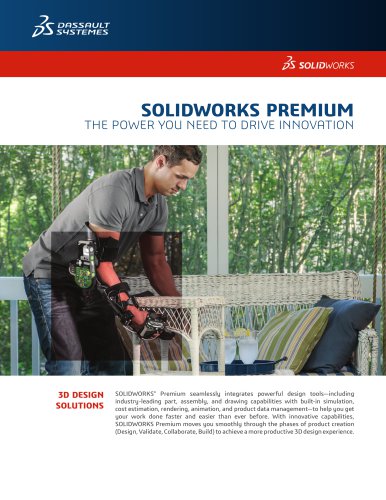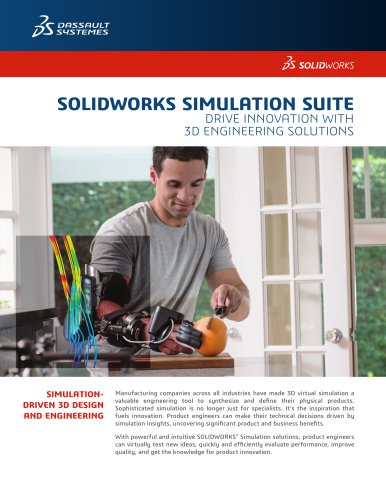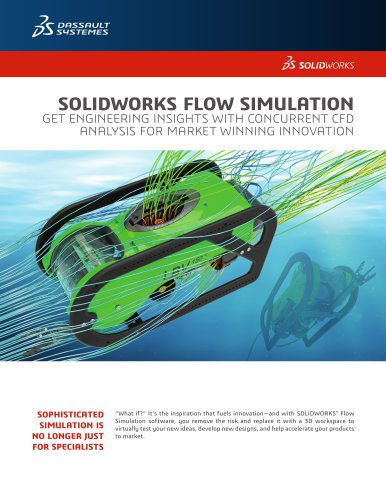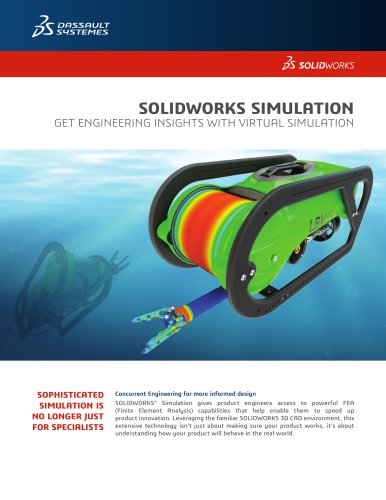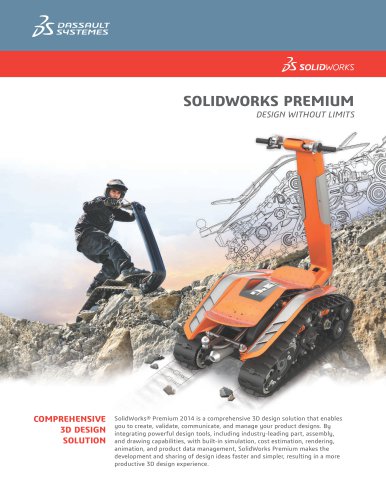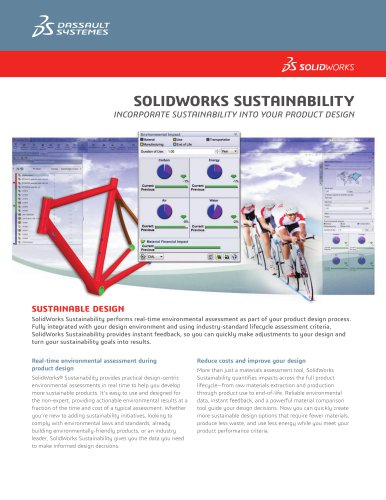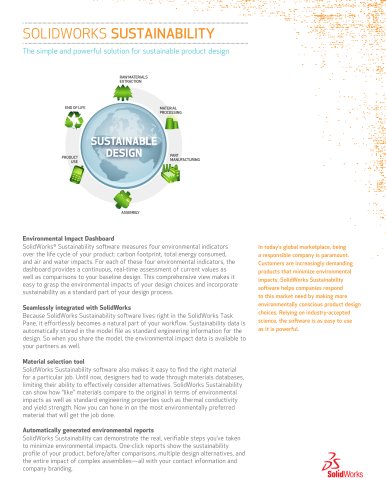
Catalog excerpts
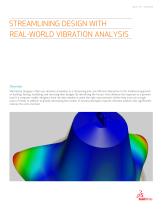
STREAMLINING DESIGN WITH REAL-WORLD VIBRATION ANALYSIS Overview Mechanical designers often use vibration simulation as a timesaving and cost-efficient alternative to the traditional approach of building, testing, modifying, and retesting their designs. By identifying the factors that influence the response to a dynamic load in a computer model, designers have the data needed to make the right improvements before they even cut a single piece of metal. In addition to greatly decreasing the number of actual prototypes required, vibration analysis also significantly reduces the costs involved.
Open the catalog to page 1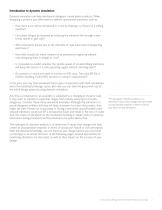
Introduction to dynamic simulation Dynamic simulation can help mechanical designers create better products. When designing a product, you often need to address operational questions, such as: • How much error will be introduced in a tool by shaking in a fixture on a milling • Can player fatigue be lessened by reducing the vibration felt through a new tennis racket or golf club? • Will components loosen due to the vibration of road noise when transporting • How thick should the motor mounts of an automotive engine be without over-designing them in weight or cost? • Is it possible to predict...
Open the catalog to page 2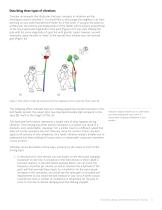
Describing three types of vibrations Consider an example that illustrates the basic concepts in vibration and the techniques used to simulate it. You would like to discourage the neighbor’s cat from perching on your pole-mounted bird feeder for a free lunch. If you give the pole just a little push, the velocity and displacement of the feeder will be linearly proportional to the input speed and magnitude of the push (Figure 1a). If you start shaking the pole with the same magnitude of input but with greater speed, however, you will eventually cause the pole to “whip” at the top and thus...
Open the catalog to page 3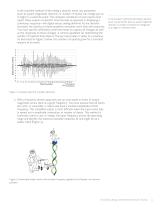
In the transient method of describing a dynamic event, any parameter (such as speed, magnitude, direction, or number of inputs) can change just as it might in a real-time event. The computer simulation of such events must report these outputs at specific time intervals as opposed to displaying a continuous response—the digital versus analog dilemma. As the duration increases, the solution to these problems consumes more time and resources. You must specify sufficiently small time-steps to capture all changes as well as the responses to those changes. A common guideline for determining the...
Open the catalog to page 4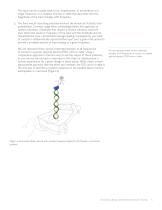
The input can be a simple peak force, displacement, or acceleration at a single frequency, or a complex function or table that describes how the magnitude of the input changes with frequency. 3. The third way of describing vibration involves the domain of statistics and probabilities. Common usage often misleadingly labels this approach as random vibrations. Situations that require a random vibration study are ones where the speed or frequency of the input and the amplitude are not repeatable but have a predictable average loading. Consequently, you need to compile a mathematically...
Open the catalog to page 5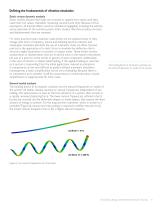
Defining the fundamentals of vibration simulation Static versus dynamic analysis Static studies assume that loads are constant or applied very slowly until they reach their full values, thereafter remaining constant with time. Because of this assumption, all inertial effects must be considered negligible, including the velocity and acceleration of the excited system. Static studies therefore produce stresses and displacements that are constant. For many practical cases, however, loads either are not applied slowly or they change with time or frequency. Inertia and damping become relevant,...
Open the catalog to page 6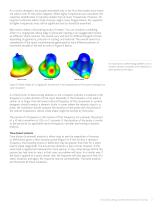
As a result, designers are usually interested only in the first few modes since those are where most of the action happens. When higher frequencies are resonated, the response amplification is typically smaller than at lower frequencies. However, for long-term vibration where small stresses might cause fatigue failure, the response at higher frequencies may still be significant and so should be examined. Bell motion makes a fascinating study of modes. You can visualize a wobbling effect in a ringing bell whose edge is physically rippling in an exaggerated motion as different tones resound....
Open the catalog to page 7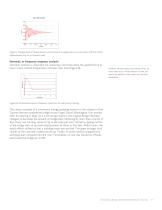
Figure 7: Sample plot of displacement versus time at a single point on a structure, with the initial displacement due to a transient load Harmonic, or frequency response, analysis Harmonic analysis is important for analyzing a structure when the applied force at one or more natural frequencies continues over time (Figure 8). Random vibration inputs are derived from an event that lasts a finite amount of time, but where the details of the event are not timedependent. Figure 8: Acceleration versus frequency spectrum for electronics testing The classic example of a continuous energy-pumping...
Open the catalog to page 8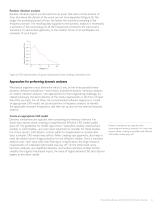
Random vibration analysis Random vibration inputs are derived from an event that lasts a finite amount of time, but where the details of the event are not time-dependent (Figure 9). The longer the evaluated period of time, the better the statistical sampling in the frequency domain. The resulting data supplied to the dynamic analysis is essentially a summary of the total energy at all the frequencies excited by the input event. Variations in road-surface geometry or the random forces of an earthquake are examples of such inputs. Figure 9: PSD representation of ground displacement near...
Open the catalog to page 9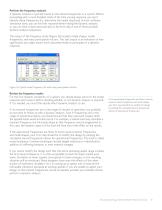
Perform the frequency analysis A dynamic analysis is typically based on the natural frequencies in a system. Before proceeding with a more detailed study of the time-varying response, you must identify these frequencies (i.e., determine the modal response). In most software simulation tools, you can find this response before doing the dynamic analysis, or you can have it done automatically as the first step in one of three possible dynamic-analysis sequences. The output of the frequency study (Figure 10) includes modal shapes, modal frequencies, and mass participation factors. This last...
Open the catalog to page 10All SOLIDWORKS catalogs and technical brochures
-
SOLIDWORKS VISUALIZE
6 Pages
-
SOLIDWORKS Solutions
6 Pages
-
SOLIDWORKS PDM
2 Pages
-
SOLIDWORKS Premium_2016
6 Pages
-
SOLIDWORKS Composer
2 Pages
-
SolidWorks Plastics
2 Pages
-
SOLIDWORKS ENTERPRISE PDM
4 Pages
-
3D COMPONENT DESIGNER
2 Pages
-
INDUSTRY INNOVATION
3 Pages
-
3D SCULPTOR
2 Pages
-
SOLIDWORKS ELECTRICAL SUITE
6 Pages
-
SOLIDWORKS Simulation Suite
4 Pages
-
SOLIDWORKS MBD
4 Pages
-
3DVIA COMPOSER
4 Pages
-
SW_Plastics_DS_2013
4 Pages
Archived catalogs
-
PROJECT PLANNER
2 Pages
-
Business Innovation
6 Pages
-
2017 SWK PDM
4 Pages
-
SOLIDWORKS Simulation_2016
6 Pages
-
SOLIDWORKS Subscription
2 Pages
-
SOLIDWORKS PREMIUM_2015
6 Pages
-
SOLIDWORKS Flow Simulation
4 Pages
-
SOLIDWORKS CircuitWorks
4 Pages
-
SOLIDWORKS EPDM
4 Pages
-
SolidWorks Simulation_2014
6 Pages
-
DRAFTSIGHT
2 Pages
-
SW2014 Datasheet EPDM
4 Pages
-
SW2014 Datasheet Top Ten
2 Pages
-
SolidWorks Premium_2013
8 Pages
-
SOLIDWORKS SIMULATION 2010
6 Pages
-
EPDM
4 Pages
-
hcv
2 Pages
-
em
2 Pages
-
SW_Electrical_DS_2013
4 Pages
-
SOLIDWORKS PREMIUM 2011
4 Pages
-
SolidWorks Routing
2 Pages
-
PhotoWorks Product Overview
2 Pages
-
COSMOSWorks Designer
2 Pages
-
SolidWorks 2008
2 Pages





